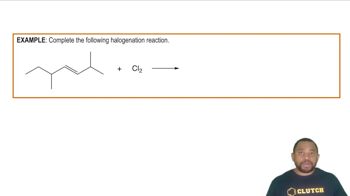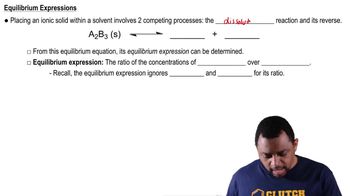Heptane, used as a solvent for rubber cement, has a density of 0.68 g/mL, the melting point is -91 °C, and the boiling point 98 °C.
d. Will heptane float on water or sink?
 Verified step by step guidance
Verified step by step guidance Verified video answer for a similar problem:
Verified video answer for a similar problem:



 2:25m
2:25mMaster Common Types of Alkane Reactions Concept 1 with a bite sized video explanation from Jules
Start learning